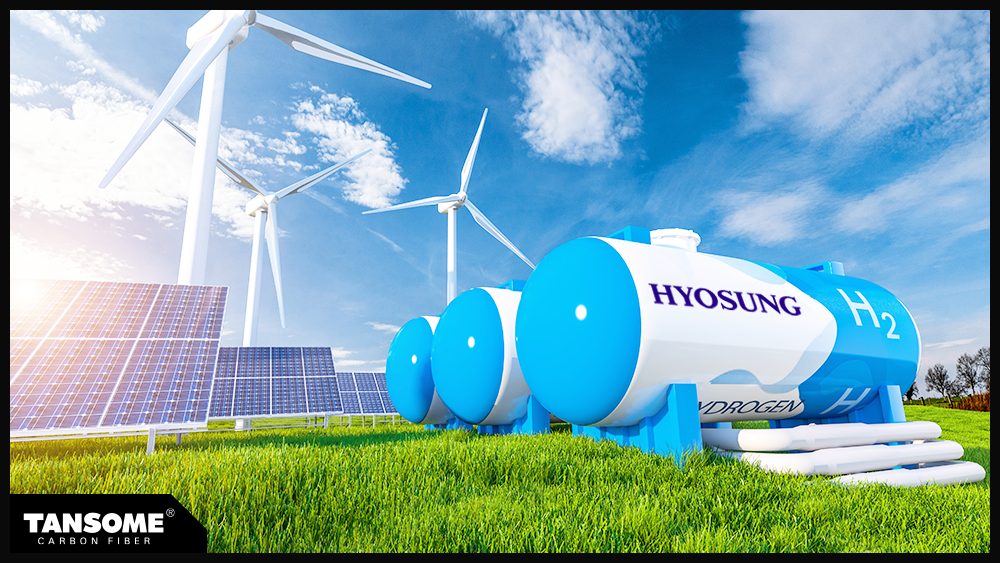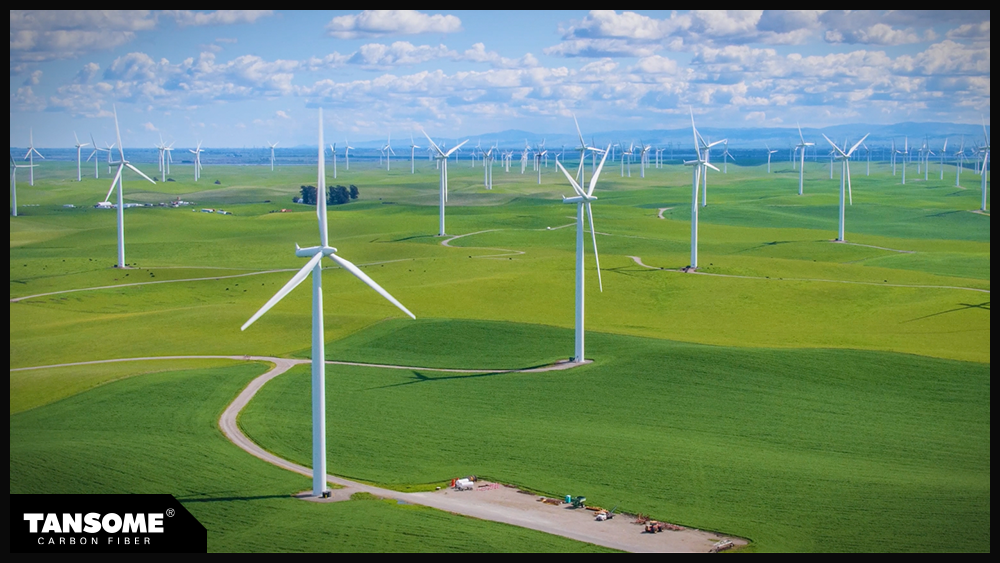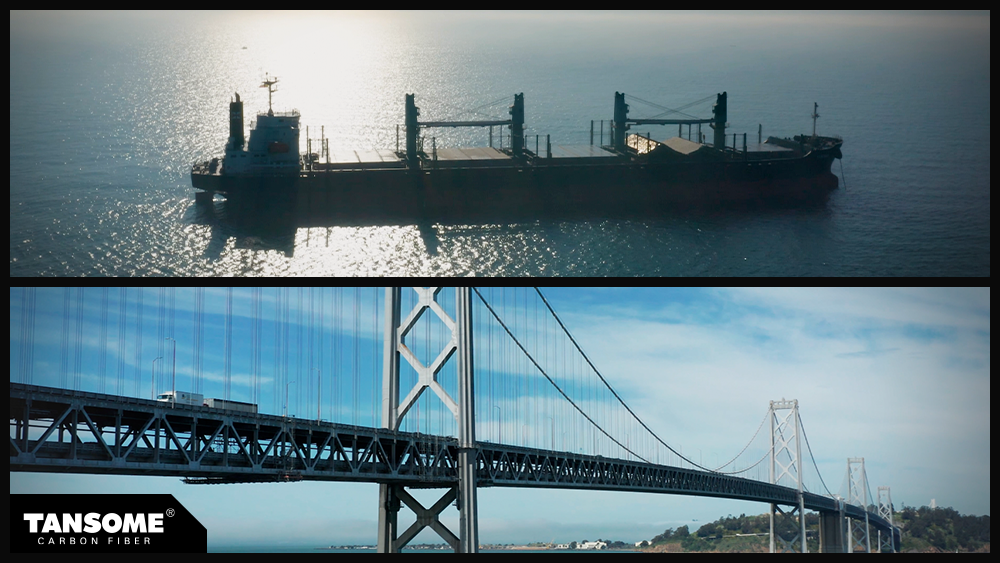Brand Journalism
Brand Journalism
2023-02-24
Carbon Fiber in Everyday Life (I)
Hydrogen cars, golf clubs, smartphones, elevator belts, sneaker soles, satellites, wind power generators, ships, and power cables. These are all products widely used in their respective industries. One might think they are not related to each other. But take a closer look. You will find one common denominator here: They are all made of carbon fiber, a special material with over 92 percent of carbon.
One might wonder. “How come these products where the most important requirement should be strength and durability are made of fibers? Wait, that doesn’t sound right.” But once you know more about carbon fiber, you will soon realize that there is no material that is more suitable.
The new material that cannot be replaced
Carbon fiber is ten times stronger yet 4 times lighter than steel. With its superior properties, carbon fiber has been gaining traction in various industries as a newly emerging material of great promise. Excellent strength and elasticity, high heat-resistance, low thermal expansion, excellent tensile strength and thermal conductivity, and high corrosion resistance. The list goes on and on.
Hyosung Advanced Materials succeeded in developing carbon fiber using its proprietary technology in 2011 after embarking on the development in 2008. TANSOME® is the first high-performance carbon fiber developed in South Korea and has been put into mass production since 2013. Last year, Hyosung has taken it to a next level by developing ultra-high-performance carbon fiber.
Confined only to special areas?
Sometimes people assume that carbon fiber is applied only to advanced technologies for its high-performance. But that is not the case. Carbon fiber is extensively applied to various areas encompassing automobile, sports, space, construction and maritime. It is also playing a key role in areas where sustainability is critical such as hydrogen and renewable energy.
The list keeps going and it has started to replace steel and aluminum in areas where lightweight and strength are required for materials. As markets evolve, its application stands only to grow.
So what are the areas where we can easily see carbon fiber in everyday life?
Carbon fiber in everyday life
You will be surprised to know how easily one can bump into carbon fiber in everyday life. It is actually in the body of premium laptops and smartphone cases. Carbon fiber plate embedded in the sole of running shoes works as a spring for better energy return and support and thus can give a performance boost in a race. Carbon fiber has long been used to make golf clubs, fishing rods, premium bikes, and tennis rockets.
Carbon fiber is used for the core of electric cables for better power transmission. Carbon fiber-reinforced materials are very transparent to X-rays and pose no harm to the human body and thus have been widely used in various medical products. It is also used to make heating benches and carbon mats for its enhanced thermal conductivity. It can be seen on exterior and interior car design, insulator in solar panels, exterior and interior of commercial airplanes, and satellites.
It doesn’t stop there. You will be also surprised to see carbon fiber reinforced materials in frames and masts of vessels and yachts for their lightweight which helps the vessels to save fuels and cost, resulting in contributing to the protection of our planet – not to mention its strength and stability it adds to the vessel in the face of strong winds and currents.

A must-have when it comes to pressure tanks
Hyosung’s carbon fiber stands strong in many areas but more so when it comes to hydrogen, an industry that’s gaining much traction as the next growth engine.
Despite its eco-friendliness and lightweight, hydrogen needs to be compressed to be stored and used due to its low density. That is why hydrogen fuel tanks that store hydrogen gas for storage and transport need to be different from ordinary ones. The tanks as such need to be strong and safe to endure pressure that can easily rise hundreds of times greater than the normal air can withstand. Additionally, the tanks need to be light enough for fuel efficiency and have high tensile strength for safety. The only viable and available material that fits all the aforementioned requirements is carbon fiber.
Hydrogen cars are emerging as the best alternative to cars running on fossil fuel that have been blamed for the main source of global warming. Hyosung’s TANSOME® is an indispensable part of the hydrogen car as it is used to make the hydrogen tanks, a critical linkage between hydrogen as an energy source and its storage and transport. Before we realized it, TANSOME® has indeed solidified its position as a key pillar of the hydrogen industry.

Wind turbine blades made of carbon fiber
Hyosung’s carbon fiber is also used in renewable energy sector. Carbon fiber reinforced materials are used in spar caps, the main load bearing structure of a wind turbine blade to reduce weight of the wind turbine structure and improve power generation efficiency.
A turbine with longer blades will be able to capture more of the available wind than shorter blades. As such, carbon fiber that is lighter than and 7 times more elastic than steel is the most optimal material for the blades.
Wind blades containing carbon fiber prevent the blades longer than 60 centimeters from bending due to wind. Now longer and lighter wind blades are easy to be made thanks to carbon fiber.

Construction reinforcement : stronger and easier to apply
Carbon fiber-reinforced concrete beams are increasingly replacing conventional concrete beams as they are much lighter than traditional steel beams and easy to apply in construction which definitely helps to cut down on the construction period. They can also be made much thinner than steel beams, which is also a plus.
Carbon fibers are at the moment applied in bridge maintenance panels and construction beams. As they don’t need any welding or assembly on site, and are lighter and easier to transport, carbon fiber reinforced concrete beams greatly contribute to improving efficiency by cutting down on the work hour on site.
It is also used for repairing old concrete. The Stuttgart Stadtbahn bridge in Germany is the world's first network arch bridge that hangs entirely on tension elements made of carbon fiber.
From a new material of dreams to an everyday thing
After emerging as a new material of dreams, carbon fibers have now become almost an everyday element in our lives. With the expanding application, the size of the global market for carbon fiber has been growing accordingly.
According to the Fuji Research Institute, the market size of the pan-based carbon fibers mainly produced by Hyosung has reached 85,790 tons as of 2021 and is expected to continue to grow around 10 percent per annum. It is also estimated to reach 327,430 tons of market size globally by 2035.
Soon we will live in a world where our everyday lives are going to be surrounded by carbon fiber-based products and a day will not go by without using a product made of carbon fibers. And at the very center of it lies Hyosung Advanced Materials.
With its strenuous efforts in research and development, in 2022 Hyosung Advanced Materials has become the third company in the world that unveiled an ultra-high-tensile carbon fiber that is T-1000 class and has tensile strength 4 times greater than existing ones. As such, Hyosung’s technology in carbon fibers is one of the most important driving forces behind the global carbon fiber market.
Until the day when no one is surprised to see carbon fiber in their everyday life, we at Hyosung Advanced Materials will continue to work on expanding the application and thus contribute to eco-friendly lifestyle of modern days. From what we see, there are limitless potentials for carbon fibers